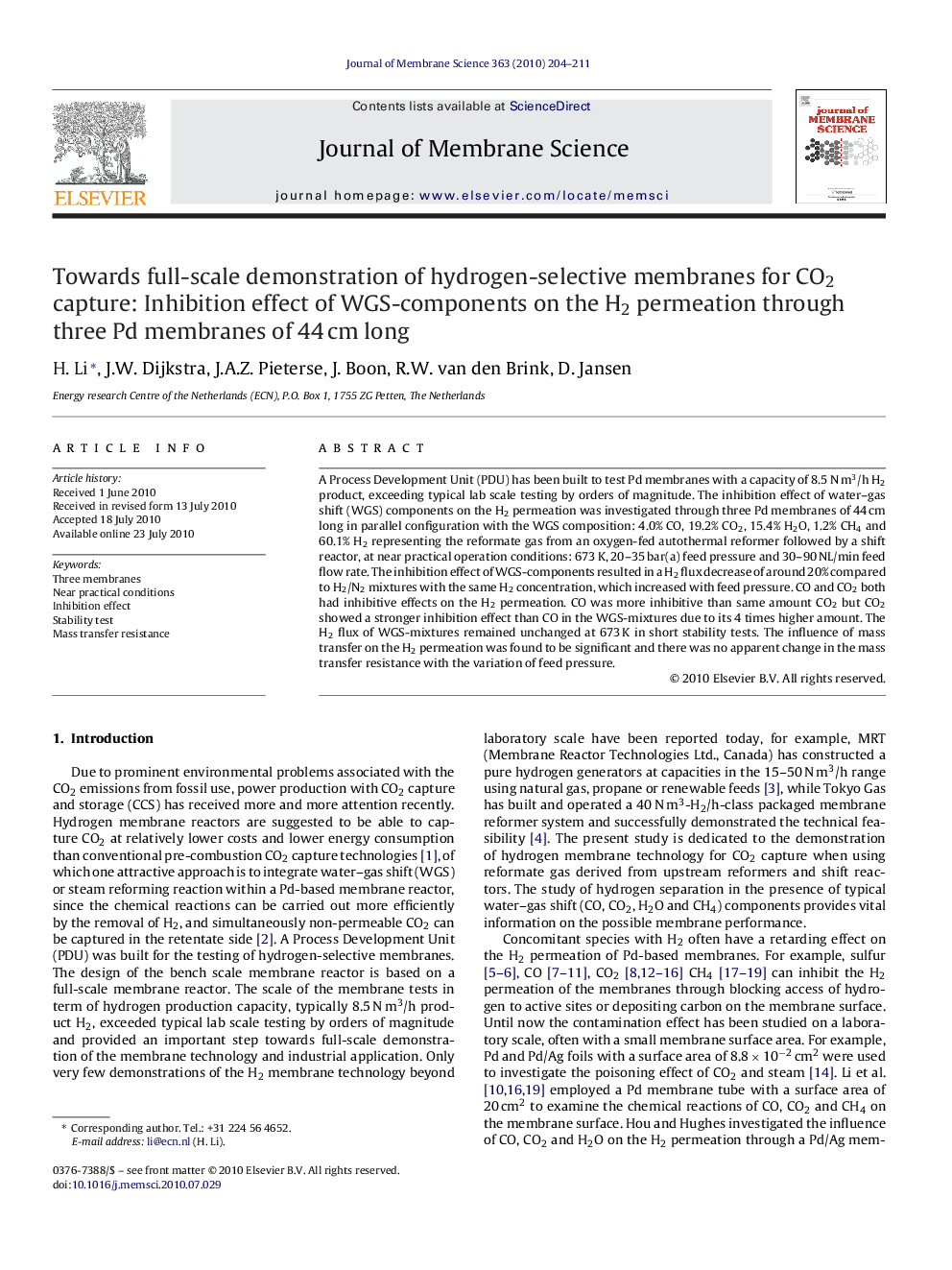| Article ID | Journal | Published Year | Pages | File Type |
|---|---|---|---|---|
| 636202 | Journal of Membrane Science | 2010 | 8 Pages |
A Process Development Unit (PDU) has been built to test Pd membranes with a capacity of 8.5 N m3/h H2 product, exceeding typical lab scale testing by orders of magnitude. The inhibition effect of water–gas shift (WGS) components on the H2 permeation was investigated through three Pd membranes of 44 cm long in parallel configuration with the WGS composition: 4.0% CO, 19.2% CO2, 15.4% H2O, 1.2% CH4 and 60.1% H2 representing the reformate gas from an oxygen-fed autothermal reformer followed by a shift reactor, at near practical operation conditions: 673 K, 20–35 bar(a) feed pressure and 30–90 NL/min feed flow rate. The inhibition effect of WGS-components resulted in a H2 flux decrease of around 20% compared to H2/N2 mixtures with the same H2 concentration, which increased with feed pressure. CO and CO2 both had inhibitive effects on the H2 permeation. CO was more inhibitive than same amount CO2 but CO2 showed a stronger inhibition effect than CO in the WGS-mixtures due to its 4 times higher amount. The H2 flux of WGS-mixtures remained unchanged at 673 K in short stability tests. The influence of mass transfer on the H2 permeation was found to be significant and there was no apparent change in the mass transfer resistance with the variation of feed pressure.
Research highlights▶ The inhibition of WGS-components on the H2 permeation is examined at bench-scale. ▶ The H2 flux of WGS-mixtures is lowered by ca. 20% compared to H2/N2 mixtures. ▶ The inhibition effect is enhanced with the increase of feed pressure. ▶ Due to its 4 times amount, CO2 shows a stronger inhibition effect than CO. ▶ The influence of gas phase mass transfer on the H2 permeation is significant.
